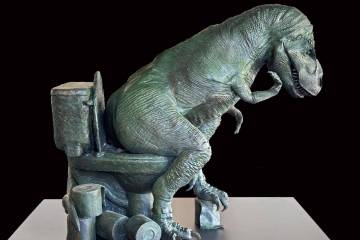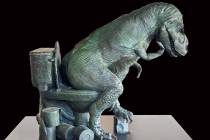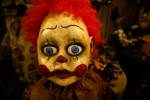You probably don’t have a clown phobia
The good news: You probably don’t have an actual clown phobia.
The bad news: That doesn’t mean that you don’t freak out around clowns.
Actually, clown phobia — a condition popularly referred to as coulrophobia — isn’t recognized as a specific phobia all its own, notes Noelle Lefforge, a psychologist and assistant director of The Practice,UNLV’s community mental health clinic.
Anxiety caused by exposure to clowns would be classified as a general, nonspecific phobia, she says.
In addition, a true clown phobia would require that someone feel more than mere unease around clowns. It would require “clinically significant distress” that could be significant enough to affect someone’s daily life, Lefforge says.
Consider it, maybe, the difference between being creeped out by clowns at a Halloween haunted house and driving a different route home to avoid passing a McDonald’s for fear that someone dressed as Ronald McDonald might be there.
Unlike some other common phobias, “we don’t see a lot with clown phobia, because it’s pretty easy to avoid clowns, if that’s something that scares you,” Lefforge says. “So there’s not a lot of research that looks specifically at clown phobias.”
However, as with other phobias, a clown phobia might be associated with having once had a negative experience of some sort with a clown, be it a direct experience or, even, “persistent coverage (of clowns) in the media,” Lefforge says.
“So you might think of portrayals of clowns as dangerous figures in movies, or coverage of John Wayne Gacy as a clown. Those types of things, if they were covered a lot, could contribute to someone developing a phobia.”
However, Lefforge adds, “a lot of people with specific phobias don’t remember the specific instance that … created the phobia.”
Typically, people with phobias strive to avoid the stimulus that causes them distress. And while clowns are easily avoided most of the year, Halloween can be a stressful time for those who are uneasy around clowns because clown images — on TV and in ads — are more prevalent, Lefforge says.
Treating a clown phobia would involve the same treatment typically used for other phobias. That generally means experiencing graduated exposure to the stimulus — here, clowns in the form of, say, photos and movies and advancing to meeting a real-live clown— until the racing heartbeat, short breaths and other symptoms associated with the exposure are extinguished and the anxiety is controlled.
Treatment is “highly effective,” Lefforge says. “The hardest part about treatment is it’s uncomfortable, because this is going to require repeated engagement with the feared stimulus. So, unfortunately, we see a high dropout rate doing this. But when people can stick with it, it’s definitely curable.”
The process can be tried by the layman at home. But, Lefforge says, “I think when professionals are really helpful is when if you’re at such a fearful level you can’t really engage with the stimulus for a long time. That’s when you want to seek professional help.”
Read more from John Przybys at reviewjournal.com. Contact him at jprzybys@reviewjournal.com and follow @JJPrzybys on Twitter.
RELATED
'Creepy clown' sensation saddens real clowns who only want to bring joy






























